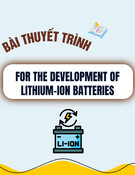
VNU Journal of Science: Natural Sciences and Technology, Vol…., No…. (20…) 1-9
1
Original Article
Genetic Diversity and Haplogroup Distribution
of Three Ethnic Groups Tay, Thai, and Nung
Nguyen Thuy Duong1,2,*, Nguyen Phuong Anh1, Nong Van Hai1,2
1Institute of Genome Research, Vietnam Academy of Science and Technology,
18 Hoang Quoc Viet, Cau Giay, Hanoi, Vietnam
2Graduate University of Science and Technology, Vietnam Academy of Science and Technology,
18 Hoang Quoc Viet, Cau Giay, Hanoi, Vietnam
Received 09 February 2023
Revised 14 November 2023; Accepted 14 May 2024
Abstract: Mitochondrial genome, with notable characteristics such as maternal inheritance, non-
recombination, and high mutation rate, is very important in population genetics and evolution
research. To study the genetic diversity and the distribution of haplogroups of Tai - Kadai
language group, the mitochondrial genomes of 108 men from three ethnic groups, Tay, Thai, and
Nung, were reanalyzed. After comparing the obtained mitochondrial genomes with the
Reconstructed Sapiens Reference Sequence (RSRS) published on Genbank (NC_012920), the
results revealed 341 246, and 256 variants in the Tay, Thai, and Nung ethnic groups, respectively,
of which 109 variants were present in all three ethnic groups. Nucleotide diversity (π) and
haplotype were highest in the Thai ethnic group, being 0.0023 and 0.989, respectively. The genetic
distances between each ethnic group pair (Tay - Nung, Tay - Thai, and Thai -Nung), based on FST
values, were 0.03101, 0.00447, and 0.03282, respectively. Haplogroup analysis showed that 108
studied individuals were assigned to 39 different sub-haplogroups, belonging to two
macro-haplogroups M and N. The most frequent haplogroups in Tay Thai and Nung were B4
(19.4%), F1 (16.7%) and M7b (19.4%), respectively. The study provides data on mitochondrial
genomes of the Tai - Kadai language family in Vietnam, thereby contributing the study on the
genetic structure of this language family.
Keywords: Haplotype, haplogroup, Nung, mitochondrial DNA, Tay, Thai, Vietnam.
D*
_______
* Corresponding author.
E-mail address: tdnguyen@igr.ac.vn
https://doi.org/10.25073/2588-1140/vnunst.5527

N. T. Duong et al. / VNU Journal of Science: Natural Sciences and Technology, Vol…, No…. (20…) 1-9
2
Đa dạng di truyền và phân bố nhóm đơn bội
ở ba dân tộc Tày, Thái và Nùng
Nguyễn Thuỳ Dương1,2,*, Nguyễn Phương Anh1, Nông Văn Hải1,2
1Viện Nghiên cứu Hệ gen, Viện Hàn lâm Khoa học và Công nghệ Việt Nam,
18 Hoàng Quốc Việt, Cầu Giấy, Hà Nội, Việt Nam
2Học viện Khoa học và Công nghệ, Viện Hàn lâm Khoa học và Công nghệ Việt Nam,
18 Hoàng Quốc Việt, Cầu Giấy, Hà Nội, Việt Nam
Nhận ngày 09 tháng 02 năm 2023
Chỉnh sửa ngày 14 tháng 11 năm 2023; Chấp nhận đăng ngày 14 tháng 5 năm 2024
Tóm tắt: Hệ gen ty thể (mtDNA) với các đặc điểm nổi bật như di truyền theo dòng mẹ, không tái
tổ hợp và tỷ lệ đột biến cao đóng vai trò quan trọng trong nghiên cứu di truyền quần thể và tiến
hóa. Để nghiên cứu sự đa dạng di truyền cũng như phân bố các nhóm đơn bội của ngữ hệ
Tai - Kadai, chúng tôi đã phân tích hệ gen ty thể của 108 cá thể nam thuộc ba nhóm dân tộc Tày,
Thái và Nùng. Sau khi so sánh trình tự các hệ gen ty thể với trình tự hệ gen ty thể tham chiếu
RSRS đã công bố trên Genbank (NC_012920), chúng tôi tìm thấy 341, 246 và 256 điểm đa hình
lần lượt ở dân tộc Tày, Thái và Nùng, trong đó có 109 điểm đa hình xuất hiện ở cả ba dân tộc. Đa
dạng nucleotide (π) và kiểu gen đơn bội (haplotype) được tìm thấy cao nhất ở dân tộc Thái với giá
trị tương ứng là 0,0023 và 0,989. Khoảng cách di truyền giữa các dân tộc theo cặp Tày- Nùng,
Tày-Thái và Thái-Nùng dựa trên chỉ chỉ số FST lần lượt là 0,03101; 0,00447 và 0,03282. Phân tích
nhóm đơn bội (haplogroup) cho thấy 108 cá thể nghiên cứu thuộc 39 nhóm khác nhau đều thuộc về
hai nhóm đơn bội lớn là M và N. Trong đó, ba dân tộc Tày, Thái và Nùng có số lượng cá thể nhiều
nhất thuộc các nhóm đơn bội tương ứng B4 (19,4%), F1 (16,7%) và M7b (19,4%). Nghiên cứu này
cung cấp dữ liệu toàn bộ hệ gen ty thể của ngữ hệ Tai - Kadai ở dân tộc Việt Nam, từ đó hỗ trợ
nghiên cứu về cấu trúc di truyền của họ ngôn ngữ này.
Từ khóa: Haplotype, haplogroup, Nùng, hệ gen ty thể, Tày, Thái, Việt Nam.
1. Mở đầu *
Việt Nam có vị trí địa lý quan trọng ở lục địa
Đông Nam Á, là cửa ngõ đến các nước, các đảo
và quần đảo trong khu vực. Do đó, nước ta có sự
đa dạng rất cao về mặt sắc tộc. Nơi đây là địa bàn
cư trú từ lâu đời của cộng đồng 54 dân tộc anh em
thuộc năm ngữ hệ (hay họ ngôn ngữ): i) Nam Á
(Austroasiatic); ii) Thái - Kadai (Tai - Kadai);
iii) Mông - Miền (H'mong - Mien); và iv) Hán -
Tạng (Sino - Tibetan) và Nam Đảo
(Austronesian) [1]. Trong đó, nhánh Tai của
ngữ hệ Tai - Kadai gồm 8 dân tộc là Tày, Thái,
_______
* Tác giả liên hệ.
Địa chỉ email: tdnguyen@igr.ac.vn
https://doi.org/10.25073/2588-1140/vnunst.5527
Nùng, Giáy, Lào, Lự, Sán Chay và Bố Y, cư trú
tập trung ở các tỉnh vùng Đông Bắc và Tây Bắc
Việt Nam như Lai Châu, Lạng Sơn, Điện Biên,
Cao Bằng, Sơn La,...
Ngữ hệ Tai - Kadai là một họ đa dạng phân
bố ở miền Nam Trung Quốc, Đông Bắc Ấn Độ
và phần lớn Đông Nam Á, với cộng đồng người
di cư ở Bắc Mỹ và châu Âu [2]. Đây là một
trong những họ chính ở lục địa Đông Nam Á,
có khoảng 95 ngôn ngữ thuộc họ này với
khoảng 93 triệu người nói ở 6 quốc gia: Trung
Quốc, Thái Lan, Lào, Myanmar, Ấn Độ và Việt
Nam [3]. Họ Tai - Kadai được cho rằng bắt
nguồn từ Đông Nam Trung Quốc 2500 năm
trước và sau đó phát triển tới Đông Nam Á
trong khoảng từ 1000 - 2000 năm trước [4, 5].
Tai - Kadai được tạo thành từ hai nhóm chính:

N. T. Duong et al. / VNU Journal of Science: Natural Sciences and Technology, Vol…, No…. (20…) 1-9
3
Thái và Kadai. Nhóm Thái bao gồm hai ngôn
ngữ chính là tiếng Thái và tiếng Lào, ngôn ngữ
quốc gia của đất nước Thái Lan và Lào, những
người thuộc hai đất nước này chiếm hơn một
nửa dân số Tai - Kadai. Tiếng Thái và tiếng Lào
có quan hệ mật thiết với tiếng Choang, ngôn
ngữ của nhóm thiểu số lớn nhất ở Trung Quốc.
Những ngôn ngữ quan trọng khác trong nhóm
Thái bao gồm Kam và Sui, với hàng triệu người
nói [2]. Nhóm Kadai bao gồm những ngôn ngữ
ít được biết đến hơn, một vài ngôn ngữ trong số
đó chỉ có vài trăm người nói thông thạo. Phần
lớn các ngôn ngữ Tai - Kadai không có hệ
thống chữ viết của riêng họ, đặc biệt là các
ngôn ngữ Kadai [2].
Các dân tộc Tày, Thái và Nùng đều là
những dân tộc thuộc họ Tai - Kadai. Dân tộc
Tày có mặt ở Việt Nam từ rất sớm, có thể từ
nửa cuối thiên niên kỷ thứ nhất trước Công
nguyên. Người Tày là dân tộc có dân số đứng
thứ hai Việt Nam, với khoảng 1,845,492 người
(Theo số liệu Điều tra 53 dân tộc thiểu số năm
2019) sinh sống chủ yếu ở vùng núi thấp miền
núi và vùng trung du Bắc Bộ, đông nhất là ở
các tỉnh Cao Bằng và Lạng Sơn [1]. Một số
nhóm địa phương thuộc dân tộc Tày bao gồm
người Ngạn, Pa Dín, Thu Lao, Phén và Thổ hóa
[6]. Cũng trong nhóm ngôn ngữ Tày - Thái này,
dân tộc Thái là dân tộc có nguồn gốc lâu đời ở
Việt Nam, hiện nay sống tập trung ở các tỉnh
Sơn La và Nghệ An, với dân số khoảng
1,820,950 người (Theo số liệu Điều tra 53 dân
tộc thiểu số năm 2019), cao thứ ba Việt Nam
sau người Kinh và Tày. Các nhóm, ngành lớn
của người Thái tại Việt Nam bao gồm Tay Đón
(Thái Trắng), Tay Đăm (Thái Đen), Tay Đèng
(Thái Đỏ) và Tay Dọ (Thái Yo) cùng một số
khác nhỏ hơn [7]. Dân tộc Thái đã có mặt ở
miền Tây Bắc Việt Nam trên 1000 năm, có
nguồn gốc từ những người Thái đã di cư từ
vùng đất thuộc tỉnh Vân Nam, Trung Quốc bây
giờ. Một trong những dân tộc thuộc nhóm ngôn
ngữ Tày - Thái khác là dân tộc Nùng. Dân tộc
Nùng phần lớn từ Quảng Tây (Trung Quốc) di
cư sang Việt Nam cách đây khoảng 200 - 300
năm [8]. Người Nùng sống tập trung ở các tỉnh
đông bắc Bắc Bộ, nhiều nhất ở tỉnh Lạng Sơn
và Cao Bằng. Theo số liệu Điều tra 53 dân tộc
thiểu số năm 2019, dân số của người Nùng là
1.083.298 người, có quan hệ gần gũi với người
Tày và người Tráng ở Trung Quốc. Cả ba dân
tộc Tày, Thái, Nùng đều ở nhà sàn, biết tận dụng
địa hình vùng thung lũng nơi có điều kiện tự
nhiên thuận lợi, để cấy lúa nước kết hợp với làm
nương rẫy, sáng tạo ra chiếc cối giã gạo, con quay
cùng hệ thống mương, phai, lái, lín đưa nước về
ruộng. Các nghề thủ công cũng khá phát triển ở
các dân tộc này, như rèn, dệt thổ cẩm với nhiều
loại hoa văn đẹp, tinh tế và độc đáo [1].
Hệ gen ty thể đã trở thành một yếu tố quan
trọng trong việc nghiên cứu về di truyền, lịch sử
tiến hoá của các dân tộc [9]. Từ năm 2018 trở
lại đây, Việt Nam đã có một số nghiên cứu về
hệ gen ty thể trên các cá thể thuộc cộng đồng
dân tộc người Việt Nam. Các nghiên cứu này
chủ yếu tập trung vào việc so sánh khác biệt
giữa các dân tộc thuộc các nhóm ngữ hệ với
nhau [10-12]. Nhằm nghiên cứu đa dạng di
truyền và phân bố các nhóm đơn bội trong cùng
ngữ hệ, chúng tôi đã phân tích toàn bộ hệ gen ty
thể của 108 cá thể thuộc ba dân tộc Tày, Thái,
Nùng trong ngữ hệ Tai - Kadai, từ đó so sánh
đánh giá mức độ đa dạng quần thể và phân bố
nhóm đơn bội của các dân tộc này với các quần
thể người khác trong cùng khu vực lân cận.
2. Đối tượng và phương pháp
2.1. Đối tượng
Tổng số 108 mẫu máu ngoại vi của các cá
thể nam khỏe mạnh thuộc các dân tộc Tày
(47 mẫu), Thái (24 mẫu) và Nùng (37 mẫu)
được thu thập và bảo quản ở nhiệt độ 4 °C. Các
cá thể được lựa chọn không cùng huyết thống
và có ít nhất ba đời cùng thuộc cùng thuộc dân
tộc. Các cá thể tham gia đều hiểu rõ mục đích
của nghiên cứu và đồng ý tham gia cung cấp
mẫu máu cho nghiên cứu này. Nghiên cứu này
đã được thông qua bởi Hội đồng đạo đức
của Viện Nghiên cứu hệ gen, Viện Hàn
lâm Khoa học và Công nghệ Việt Nam
(Số 9-2019/NCHG-HĐĐĐ).
2.2. Phương pháp nghiên cứu
Tách chiết và giải mã hệ gen ty thể.

N. T. Duong et al. / VNU Journal of Science: Natural Sciences and Technology, Vol…, No…. (20…) 1-9
4
DNA tổng số được tách chiết từ mẫu máu
toàn phần, sử dụng kit GeneJET Whole Blood
Genomic DNA Purification (Thermo Fisher
Scientific, USA) theo hướng dẫn của hãng sản
xuất. Nồng độ và chất lượng của DNA được
kiểm tra bằng điện di trên gel agarose 0,8% và
dựa trên độ hấp thụ ánh sáng ở các bước sóng
230, 260 và 280 nm trên máy Nanodrop Lite
(ThermoFisher Scientific, USA). Từ DNA tổng
số, mtDNA được khuếch đại, phân mảnh thành
các đoạn ngắn và nối với các đoạn tiếp hợp
(adapters) để thiết lập thư viện. Sau đó, thư viện
mtDNA được giải trình tự trên hệ thống máy
giải trình tự thế hệ mới Illumina [13]. Các đoạn
đọc ngắn được dóng hàng và căn chỉnh dựa trên
trình tự tham chiếu (Reconstructed Sapiens
Reference sequence - RSRS) [14, 15] sử dụng
ngôn ngữ lập trình R và phần mềm MAFFT [16].
Phân tích số liệu
Các nhóm đơn bội DNA ty thể (mtDNA)
được xác định bằng phần mềm HaploGrep2
(www.haplogrep.uibk.ac.at) [17] và cơ sở dữ
liệu của PhyloTree mtDNA tree Build 17
(http://www.phylotree.org). Phân tích tương
ứng (Correspondence Analysis - CA) của các
nhóm đơn bội được thực hiện sử dụng ngôn ngữ
lập trình R và thư viện “vegan” - “ca”. Các
phân tích mức độ đa dạng hệ gen ty thể
(Analysis of Molecular Variance - AMOVA) ở
các dân tộc được tiến hành bằng phần mềm
Arlequin phiên bản 3.5.2.2 [18].
3. Kết quả
3.1. Đa dạng di truyền nucleotide và haplotype
hệ gen ty của các cá thể dân tộc
Kết quả so sánh hệ gen ty thể của 108 cá thể
với trình tự hệ gen ty thể tham chiếu RSRS đã
công bố trên Genbank (NC_012920) đã tìm
thấy 341, 246 và 256 điểm đa hình lần lượt ở
dân tộc Tày, Thái và Nùng, trong đó có 109
điểm đa hình xuất hiện ở cả ba dân tộc. Từ đó
có thể thấy, số liệu thu được từ ba dân tộc trên
có các trình tự có sự đa dạng lớn, phản ánh tốc
độ đột biến cao của hệ gen ty thể. Dựa trên các
điểm sai khác này trong hệ gen ty thể, 89 trình
tự hệ gen ty thể khác biệt (haplotype) đã được
xác định. Đa dạng về kiểu gen đơn bội (H) thấp
nhất ở dân tộc Nùng (H = 0,982) và cao nhất ở
dân tộc Thái (H = 0,989). Cả hai giá trị về sự đa
dạng nucleotide (π) và số lượng chênh lệch
trung bình theo cặp (MPD) cũng thấp nhất ở
nhóm dân tộc Nùng (với giá trị tương ứng là
0,0021 và 34,2), trong khi giá trị lớn nhất được
quan sát thấy ở nhóm dân tộc Thái (tương ứng
là 0,0023 và 38,2) (Bảng 1). Kết quả so sánh
khoảng cách di truyền theo cặp hai dân tộc cho
thấy Tày - Thái có khoảng cách di truyền thấp
nhất (FST = 0,00447), tiếp đến là Tày - Nùng
(FST = 0,03101) và Thái - Nùng (FST =
0,03282).
Bảng 1. Sự đa dạng di truyền ở nhóm Tai - Kadai
Dân
tộc
Số
mẫu
Số lượng
haplotypes
H
MPD
Tày
47
40
0,988
0,0022
35,8
Thái
24
21
0,989
0,0023
38,2
Nùng
37
28
0,982
0,0021
34,2
Chú ý: H: đa dạng kiểu gen đơn bội,
π: đa dạng nucleotide, MPD: số lượng chênh lệch
trung bình theo cặp.
3.2. Phân nhóm đơn bội
Kết quả định danh các nhóm đơn bội sử
dụng trình tự toàn bộ hệ gen ty thể cho thấy 108
cá thể thuộc ba dân tộc Tày, Thái và Nùng
được phân thành 39 nhóm đơn bội khác nhau
(Bảng 2). Sơ đồ trực quan tương ứng của toàn
bộ 39 nhóm đơn bội được thể hiện ở Hình 1.
Toàn bộ 39 nhóm đơn bội này thuộc hai
nhóm đơn bội lớn (macro-haplogroup) M và N,
trong đó phần lớn thuộc ba nhóm M7b, F1 và
B4 với tỷ lệ phần trăm trên tổng 108 cá thể
tương ứng là 19,4% (21/108), 16,7% (18/108)
và 19,4% (21/108) (Bảng 2). Nhóm macro-
haplogroup M gồm các nhóm nhóm đơn bội M,
C, G, và D, chiếm 45,4% tổng số mẫu nghiên
cứu (49/108) và được phân vào 17 nhóm đơn
bội nhỏ (sub-haplogroup) khác nhau. Trong đó,
nhóm sub-haplogroup M7b1a1 xuất hiện nhiều
ở cả ba dân tộc Tày, Thái và Nùng với tỉ lệ
tương ứng là 19,1% (9/47), 8,3% (2/24) và 27%
(10/37) (Bảng 2).

N. T. Duong et al. / VNU Journal of Science: Natural Sciences and Technology, Vol…, No…. (20…) 1-9
5
Bảng 2. Các nhóm đơn bội (haplogroup) được định danh của 3 dân tộc Tày, Thái, Nùng
Macro-
haplogroup
Haplogroup
Dân tộc
Tày
(n=47)
Thái
(n=24)
Nùng
(n=37)
M
M5
1 (4,2%)
M7
M7b'c
M7b
M7b1a1
M7b1a1
4 (8,5%)
3(8,1%)
M7b1a1 + 16192
2 (4,3%)
2 (8,3%)
1 (2,7%)
M7b1a1a3
3 (6,4%)
6 ( 16 ,2%)
M7c
M7c1
2 (8,3%)
1 (2,7%)
M7c2
1 (4,2%)
M8
CZ
C
C7
C7
1 (2,1%)
1 (4,2%)
C7a
1 (2,1%)
2 (8,3%)
3 (8,1%)
C7a1
1 (2,7%)
M9
M9a'b
M9a
M9a5
1 (2,1%)
M12'G
M12
M12a
M12a1
1 (2,1%)
1 (4,2%)
G
G2
G2a1
1 (2,7%)
M13'46'61
M61
3 (8,1%)
M42'74
M74
M74a
1 (4,2%)
1 (2,7%)
M80'D
D
D4
D4g2a1
2 (8,3%)
D5
D5b3
2 (4,3%)
D5b4
1 (2,1%)
N
N9
N9a
N9a1'3
N9a1
2 (4,3%)
N9a6
2 (5,4%)
N9a10
1 (4,2%)
1 (2,7%)
A
A5
A5b1
1 (2,1%)
R
R9
R9b
R9b1
2 (4,3%)
1 (2,7%)
F
F1
F1a'c'f
F1a
8 (17%)
3 (12,5%)
F1c
2 (8,3%)
1 (2,7%)
F1f
1 (2,1%)
1 (4,2%)
1 (2,7%)
F1e
F1e3
1 (2,1%)
F2
F2d
1 (2,1%)
F3
F3a
F3a1
1 (2,1%)
2 (5,4%)
R11'B
B
B4
B4a
B4a1c
1 (2,1%)
B4a1c4
1 (2,1%)
1 (2,7%)
B4a1e
2 (8,3%)
B4g
B4g1
2 (8,3%)
1 (2,7%)
B4h
1 (2,1%)
B4m
1 (2,1%)
B4b
B4b1
3 (6,4%)
3 (8,1%)
B4c
B4c1
3 (6,4%)
B4c2
1 (2,1%)
1 (2,7%)
B5
B5a
B5a1
3 (6,4%)
1 (2,7%)
B6
B6a
2 (5,4%)
y

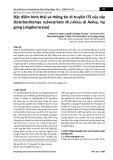
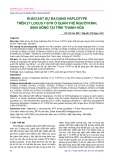
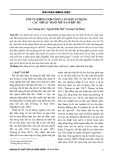
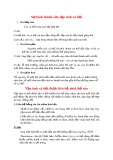
![Hướng dẫn tư vấn di truyền học sinh sản cho bệnh nhân [chuẩn nhất]](https://cdn.tailieu.vn/images/document/thumbnail/2018/20180728/trieuhkt/135x160/8131532770629.jpg)
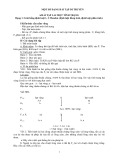
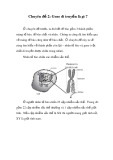
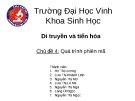
![Đột biến số lượng nhiễm sắc thể: Chuyên đề [Chuẩn SEO]](https://cdn.tailieu.vn/images/document/thumbnail/2016/20161024/uceacademy/135x160/5091477305546.jpg)
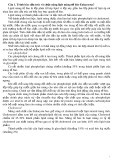

![Đề thi kết thúc học phần Nguyên lí Hóa học 2 [mới nhất]](https://cdn.tailieu.vn/images/document/thumbnail/2025/20251014/anhinhduyet000/135x160/69761760428591.jpg)


